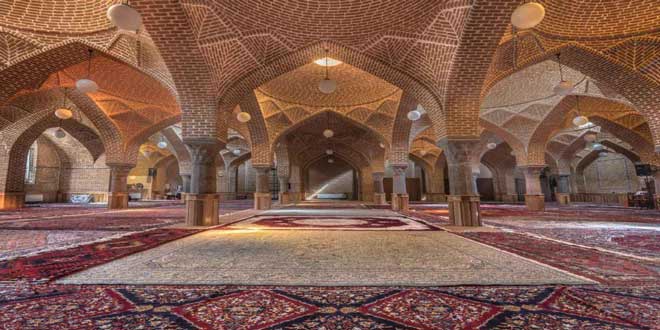Irana Carpets, Persian Carpets
getting to know Persian carpets
Getting to know Persian carpets
Recognizing and presenting a collection of rugs is never an easy thing to do, Irana has decided to compile a small guide to make sure that customers or even just the curious approach this art knowledgeably.
Starting with classical Persian carpets, which according to their place of origin have recognizable traits.
Persian carpets have time-consuming and demanding processing methods; making this type of carpet cannot be improvised but requires in-depth knowledge of materials, colors , patterns and processing methods that vary from area to area.
The weavers of
Persian or Oriental carpets
are getting harder and harder to find, if the older generations do not pass on the love of the art of weaving to their children or grandchildren slowly this treasured art will fade away.
Undoubtedly the Persians are the most widely recognized,
many people think that oriental carpet is synonymous with Persian carpet but this is not so.
Carpets are named after the places where they were knotted, the most common styles being Persian, Afghan, Pakistani, Turkmen, Caucasian, and Baluchi.
Small provenance guide of some
Persian carpets
:
Abadeh carpet:
The carpets are shades of red tending to brown combined with blue ,with a medallion in the central part and at the corners. Usually the carpets feature a large hexagon in the center with a rosette or medallion. The field is filled with small pictures of birds, four-legged animals, as well as trees and flowers. These are good carpets ,strong and durable.
— >> Read this article on Artisans of Abadeh Persia
Ardebil carpet:
For those who know about carpets, this name may recall the well-known Ardebil carpet preserved in the
Victoria and Albert Museum
in London. This carpet had been knotted in Keshan and placed in the Ardebil Mosque and then sold to raise money for the restoration of the mosque itself. The carpets knotted in Ardebil are inspired by Caucasian motifs such as Shirvan, Karabagh and Gendje . In the present day, workmanship is concentrated on the runners, which are elegant and very sturdy.
Gabbeh carpet:
The word Gabbeh (from Farsi; rough, natural, uncut) describes a loosely knotted, primitive-patterned carpet most often knotted by Ghashghai nomads in southwestern Iran. These carpets are probably Iran’s best-known hand-knotted nomadic carpets. They are composed of spun wool by hand, both at the pile and warp level, and the yarn is dyed with vegetable dyes. They are much thicker than other Persian carpets: in fact, they sometimes reach 2.5 cm thick.
— >> to learn more about Persian gabbeh carpets Click Here.
Hamadan carpet:
Hamadan is a city located 300 km west of Tehran. It is one of the oldest cities in the world and is mentioned by the name Ekbatana in the book of Esther in the Bible. The best carpets from this area are sold under their proper names, such as Nahavand, Tuiserkan, Malayer or Hosseinabad. Their characteristic patterns and format, make them easily recognizable . The pattern is highly variable, and there are both medallion carpets and carpets with repeated patterns. Among the individual motifs, the Herati motif is the most common. The rugs are processed with coarse, shiny yarn and often dyed with natural, hand-spun colors, which gives a very durable surface and a perfect color scale.
Isfahan carpet:
Architecturally, the city is a masterpiece and one of the most important and historic in the Islamic world. The large Imam Square with two mosques and palaces, parks, and the old bridges creates an atmosphere that allows the visitor to really feel in the East. There are a large number of carpet display sites in and around the city. Many of them, including Seirafian, Davari, Enteshar and Haghighi, are known throughout the world. The motifs are often inspired by the tile works of mosques, or the gardens and palaces of the city. The carpets from Isfahan are high-class in terms of pattern composition, raw materials and making. They have a very high knot density and feel very soft to the touch.
— >> To read more about Isfahan handmade carpets Click Here.
Nain carpet:
The carpets of this city have an excellent reputation and are highly valued. Both the material and the making are top class, and the knot density is very high, often over a million knots per square meter. The material in the most exclusive carpets is wool on a silk warp and using silk for both the warp and the weft and pile.
The pattern with the central medallion, arabesques and floral motifs are common. The similarity to carpets from nearby Isfahan is striking. These are highly sought-after and incredibly finely crafted carpets.
Tabriz carpet:
Tabriz, located 600 km west of Tehran, is also one ofIran ‘s largest cities and the capital of the Iranian province ofAzerbaijan. Today’s carpet production is extensive, and the quality varies from fine handicrafts to simple, inexpensive market specimens. A fine Tabriz has a short, coarse pile; the motifs may depict a central medallion surrounded by arabesques, weeping willows and cypresses. Another popular motif is the four seasons, which describe the lives of Persian peasants .Tabriz rugs often bear the designation Raj after the name. This word defines the number of knots, usually the numbering representing the density of the knots is also put next to it.




